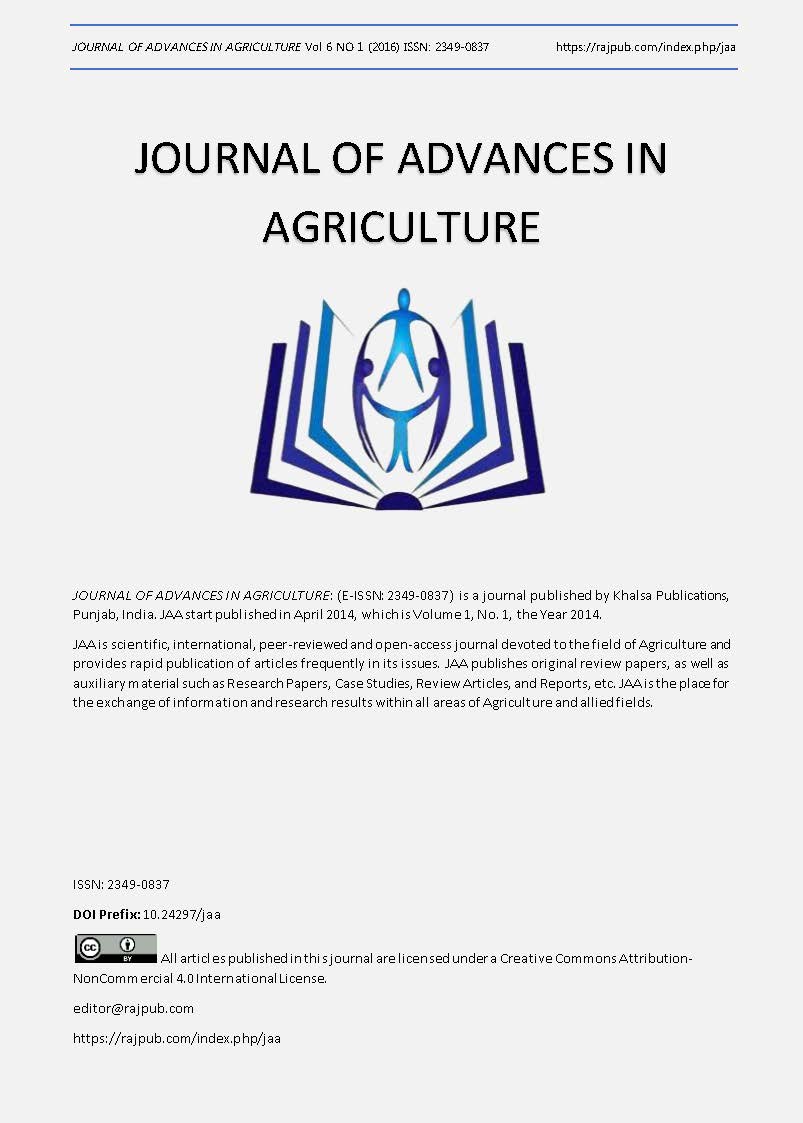Micro-habitats Utilizations, Feeding Niche Overlapping, and Management Systems Impacts on Community Tolerances of Wasp Species within Oil Palm Plantations.
DOI:
https://doi.org/10.24297/jaa.v6i1.5395Keywords:
Micro-habitats, Niche Overlapping, Management Systems, Community, Oil Palm Plantations, Wasps.Abstract
A study on micro-habitats utilizations, feeding niche overlapping, and management systems impacts pertaining to hymenopteran community were evaluated at five chosen oil palm age stands within FELDA Sungai Tekam oil palm plantations, Pahang. Samplings were done within the duration of one year, employing the standard Malaise traps, starting from February 2013 till February 2014, involving both hot and wet seasons. 60 species, from 17 families and 35 subfamilies were successfully collected during the sampling periods. Eight defined micro-habitats were elaborated, with the subdivisions of major, minor, stable, and risky micro-habitat types. Management systems impacts were associated with the applications of chemical herbicides and fertilizers. Species groups were formed using Two-Way Hierarchical Cluster Dendrogram, following 75% of information remaining. Three species groups were formed for hot and wet seasons respectively, with the first group involved nearly half of the overall hymenopteran community. Beneficial nectariferous plants, heaps of chipped rotting oil palm trunks, and remnants of rotting forest logs were all the prominent micro-habitats associated will all cases of hymenopteran species groups, for both cases of major and minor micro-habitat types. Application of BASTA, Glyphosate-Type-A and Type-B herbicides, as well as NK-Mix, Borax, and GML chemical fertilizers were all highly correlated with hymenopteran species groups, showing the high tolerance of most hymenopteran species towards the employed management systems, with reference to minor micro-habitats. Strong feeding ecological niches and plexus values between species of similar species groups formed were specifically associated with discrete but connected minor micro-habitats with weaker food chains, collectively forming larger stable food webs within major micro-habitats. Suggestions on maintaining minor micro-habitats for the survival of most hymenopteran community, as well as the sustenance of their food sources were also discussed.Â
Downloads
Downloads
Published
How to Cite
Issue
Section
License
 All articles published in Journal of Advances in Linguistics are licensed under a Creative Commons Attribution 4.0 International License.
All articles published in Journal of Advances in Linguistics are licensed under a Creative Commons Attribution 4.0 International License.




